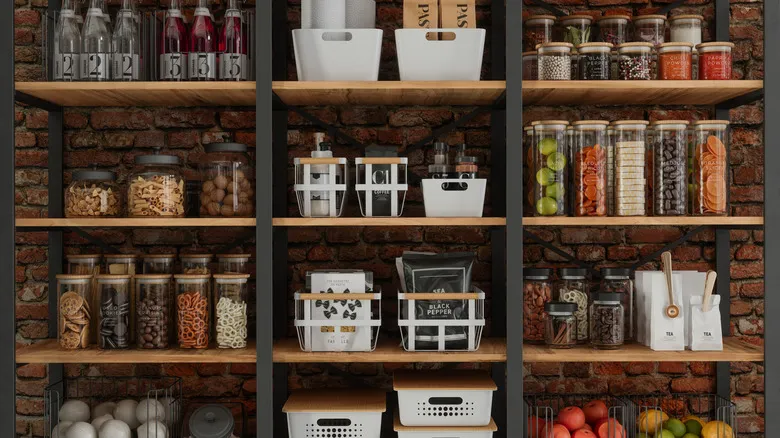1. Nuts
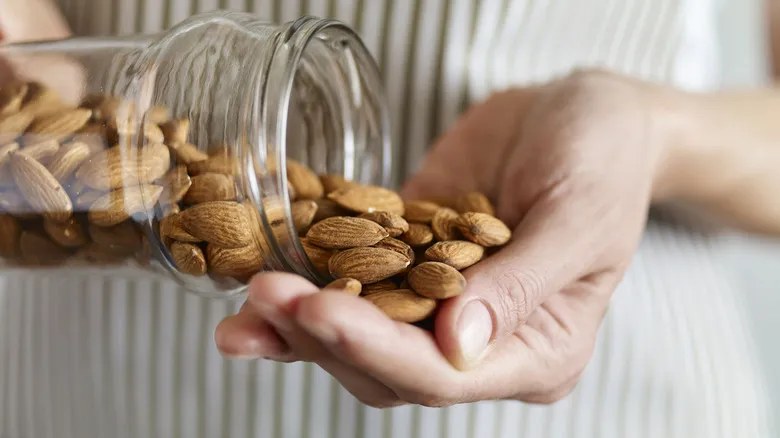
If you keep your nuts in the pantry and occasionally forget about them, you're not the only one. A glance into any kitchen will likely reveal peanuts, cashews, and mixed nuts tucked away. However, storing nuts at room temperature poses a problem: the unsaturated fats (the healthy fats) begin to deteriorate when exposed to heat, air, and light, ultimately leading to the formation of free radicals.
This deterioration results in rancidity, which can taste as unpleasant as it sounds, depending on how far it has progressed. Once opened, nuts typically last only a few months at room temperature. To extend their freshness, transferring them to an airtight container immediately after opening can help reduce their exposure to air, which causes oxidation, but temperature remains a concern.
Fortunately, there’s a more effective storage option that can extend their shelf life to nearly a year: the refrigerator. Even better is the freezer, where nuts can remain fresh for over a year, and in some cases, up to three years, depending on the type. To further prevent oxidation, it’s advisable to move the nuts into an airtight plastic freezer bag or a glass container (ensuring it’s freezer-safe if needed).
2. Opened store-bought broth
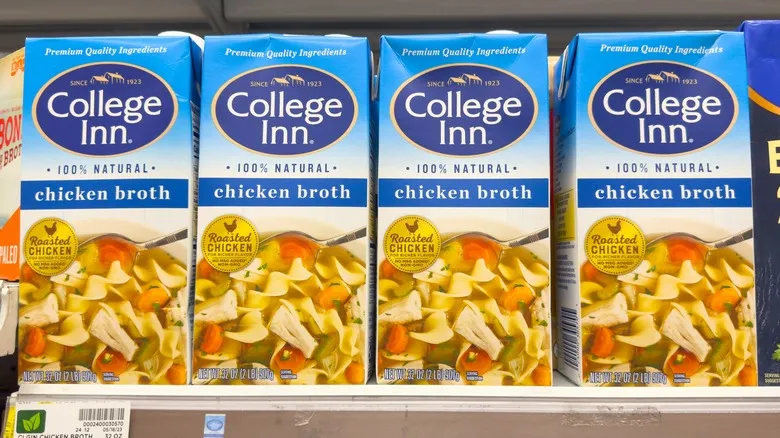
Pre-packaged broth is a lifesaver for cooks seeking convenience. Unopened boxed broth can remain good for a year beyond its printed sell-by date when kept in a cool, dry pantry. But what happens once you open it? There's often a bit of broth left over. You place it in the fridge, promising yourself you'll use it in another dish within a few days, but let's face it — that might not happen for at least a week, and that's where the issue arises. You might be surprised to learn that opened store-bought broth only stays fresh for about three to four days, according to the USDA. This guideline applies similarly to both chicken and vegetable broth.
Fortunately, the freezer comes to the rescue once again. If you've realistically assessed your meal planning for the upcoming week and realized you won't be using that leftover broth, transfer it to a zip-top bag or an ice cube tray. Chicken broth can be stored in the freezer for up to three months, while vegetable broth can last for up to six months for optimal quality.
3. Spices
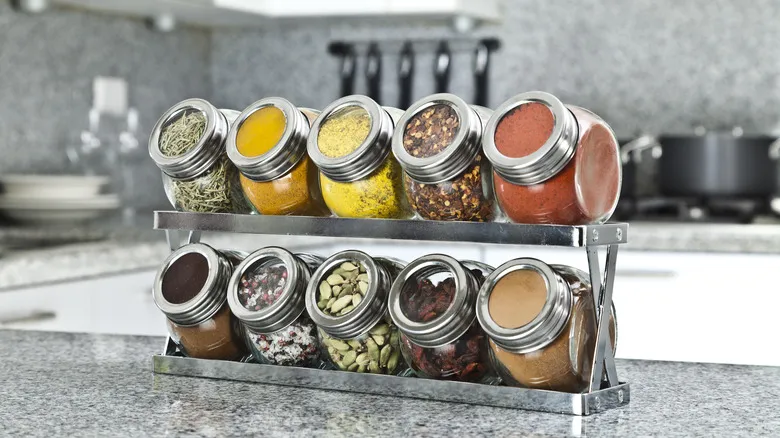
In many kitchens, spices are often kept near the stove for easy access. However, this location isn't ideal for preserving their longevity. Unlike some other ingredients, spices don’t actually spoil or become harmful over time. Instead, they gradually lose their aroma, color, and flavor, becoming lackluster—definitely not what you want when seasoning a dish.
This decline in potency occurs more quickly with ground spices than with whole ones. According to the USDA, whole spices can last two to four years, while ground spices typically last two to three years. However, their freshness begins to diminish as soon as you open the container. If stored improperly, spices can lose their vibrancy well before their expected shelf life.
Similar to nuts, spices (both whole and ground) should be kept away from air, heat, and light. The best approach is to store them in a cool, dark pantry in airtight glass or ceramic containers. Additionally, how you use spices is important; moisture can negatively affect their flavor and texture (and may even lead to mold), so it’s advisable to use a spoon to sprinkle spices onto hot food rather than shaking the container over a steaming pot or plate.
4. Potatoes

Raw potatoes may appear tough and resilient, but these versatile tubers have specific needs for maintaining their freshness. The way and place you store them greatly influences their shelf life. Under optimal conditions, a raw potato can last for several months, but if kept at room temperature, their lifespan shortens to just one to two weeks.
To ensure proper storage, it's crucial to keep potatoes away from light and heat. The ideal location is a cool, dark area, such as a basement or a dim pantry. Aim to maintain a temperature between 45 and 50 degrees Fahrenheit, as colder temperatures can disrupt the starch content, affecting both flavor and texture. In other words, avoid storing them in the refrigerator.
Additionally, steer clear of placing them in a cabinet near the stove, as higher temperatures can deplete their moisture and lead to sprouting. Never consume sprouted potatoes, even if they appear fine otherwise, as they contain elevated levels of a toxic compound called solanine, which can result in food poisoning symptoms. Lastly, refrain from washing potatoes before storage, as this can promote fungal growth. Similarly, do not store them in an airtight container, as proper airflow is essential to prevent excess moisture buildup.
5. Olive oil
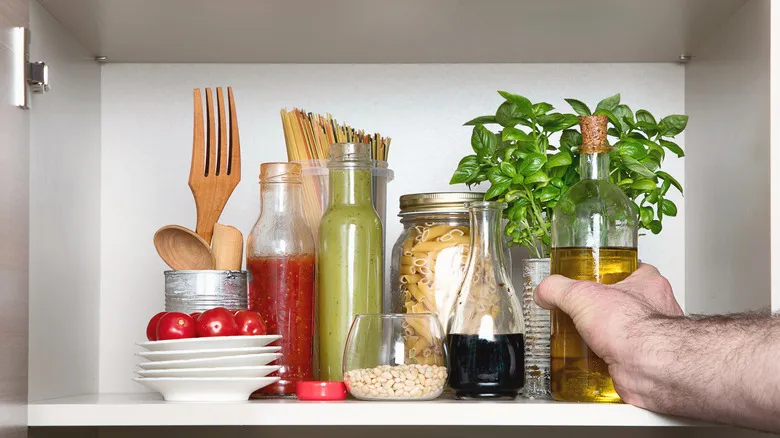
In addition to being packed with antioxidants and potentially helpful in lowering the risk of heart disease, stroke, and Alzheimer's, olive oil is simply delicious. In 2022, Americans consumed 381,000 metric tons of this beloved fat (according to Statista), which means many bottles are likely sitting in our kitchens right now. The crucial question is: Where are you storing your olive oil? If you're making any of these common storage errors, you might be shortening its shelf life.
Like many other foods that spoil more quickly than expected, olive oil is sensitive to light, heat, and air, which can spoil it. Exposure to these factors can degrade even the finest olive oils. Not only does this impact the flavor and quality, but it also diminishes those valuable antioxidants.
To preserve your olive oil, keep it away from the stove and windows, and ensure the bottle is tightly sealed to prevent air from entering. A cool, dark cabinet or pantry can help maintain its quality for up to three months. However, avoid storing it in the refrigerator, as there is some evidence that frequently moving olive oil between hot and room-temperature settings can negatively affect it.
6. Brown rice
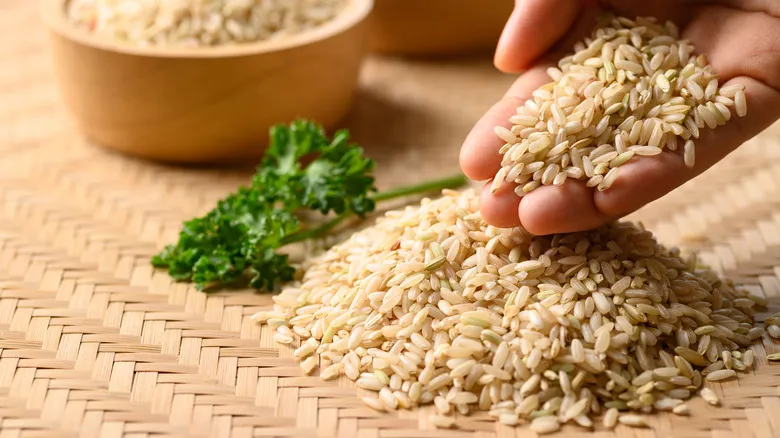
When we consider shelf-stable essentials, rice is often one of the first items that comes to mind. Keeping it readily available in your pantry makes meal preparation significantly easier. If it’s been a while since you last used brown rice, you may have a spoiled batch sitting in your pantry. Brown rice not only takes longer to cook than white rice, but it also has a shorter shelf life.
While dry white rice can remain shelf-stable for up to two years, dry brown rice should be discarded three to six months after its production date. Its quicker spoilage is due to the oil present in its bran layer, which can oxidize and become rancid, similar to nuts. White rice, having had the bran and germ removed, lacks some of the antioxidants, vitamins, and minerals found in brown rice, but it is less sensitive when it comes to storage.
For long-term storage of brown (or any) rice, it’s advisable to keep it at 40 degrees Fahrenheit or lower—making the refrigerator an ideal option. Storing it in the freezer, where it can last up to two years, is even better. If that’s not feasible, aim to keep dry rice at a temperature below 70 degrees Fahrenheit.
7. Tea bags
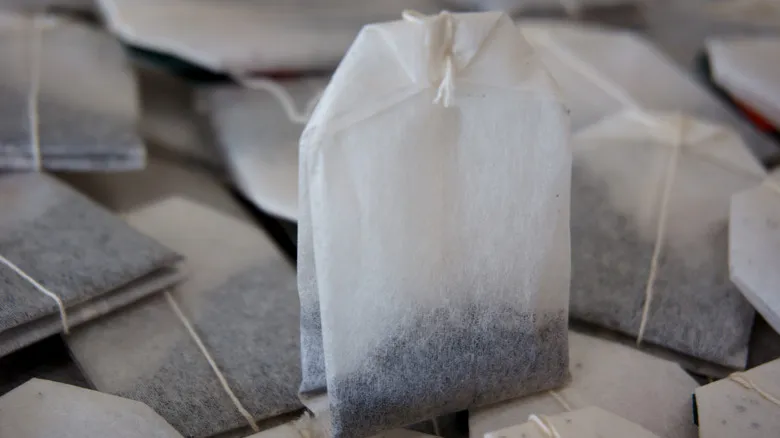
Do you find yourself holding onto boxes of tea bags for a long time, believing they will remain fresh forever? Each box of tea has a best-before date printed on it, which serves as a guideline to follow if you want to maintain its flavor and aroma—qualities that diminish over time. Even more concerning, if your tea bags haven't been stored properly, moisture may have seeped in, speeding up the staling process along with the usual offenders: air, light, and heat. Like many other foods, it's best to keep tea in an airtight container in a cool, dry location away from direct sunlight. This way, it can remain at its peak for anywhere from two weeks to a year.
Different types of tea also have varying shelf lives. Green and white teas are particularly susceptible to spoilage, so if you've been storing one of these varieties for an extended period, it's wise to check for freshness. As tea darkens, its longevity tends to increase, but it's still advisable to store black tea in a cool environment. Pu-erh tea, which undergoes fermentation, is somewhat of an exception as it can actually improve with age, provided it is kept away from moisture, heat, and light.
8. Store-bought mayonnaise
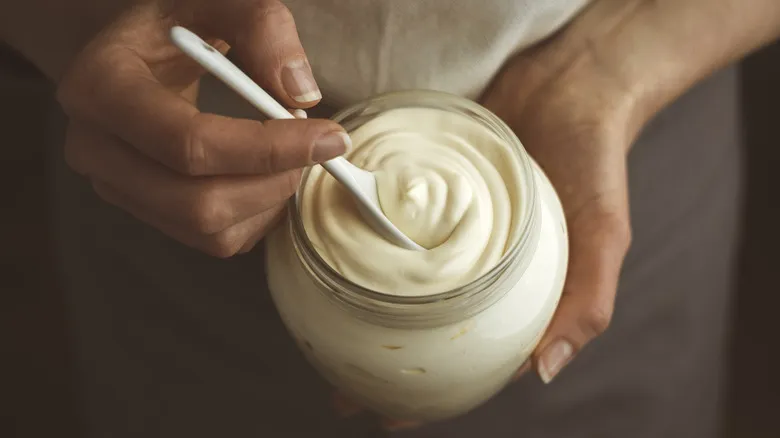
If you don't use mayonnaise often, the bottle in your fridge might be ready to be discarded. There are many misconceptions about mayo, one of which is that it's safe to ignore this creamy condiment once it's been opened. This confusion likely stems from the fact that commercially produced mayo is pasteurized and contains acidic ingredients like vinegar and lemon, which help inhibit bacterial growth. However, that doesn't mean you can keep an open bottle indefinitely without thinking about it.
When stored properly—tightly sealed and refrigerated—mayonnaise can generally remain good for two to three months past the date printed on the label. The USDA recommends not keeping mayo for more than two months after opening. Nevertheless, it's wise to inspect it for any signs of spoilage if you've exceeded the best by date. Any off or strange smell, discoloration, unusual texture, or visible mold indicates that it's time to throw that jar away.
9. Wine

Wine is well-known for its shelf stability, and the phrase "aging like fine wine" is frequently used. However, there's a small caveat to this saying: not all wines age uniformly, and the renowned durability of unopened wine only applies when it is stored properly. The most important rule for storage is that heat is detrimental to wine. This is why kitchens are typically poor storage locations; the temperature fluctuates too much and is seldom cool enough to maintain a bottle's quality over time. (For opened wine, the refrigerator is the ideal place to keep it.)
So, what temperature is ideal for preserving wine for years, and how long can you realistically expect it to last? Generally, wine should be stored at a consistent temperature between 45 and 65 degrees Fahrenheit. When kept at this temperature and shielded from light, unopened white and rosé wines can be enjoyed one to two years past their expiration date (if you can locate one). In contrast, unopened red wine remains fresh for two to three years after its printed expiration date. The longer shelf life of red wine is attributed to its higher tannin levels, which aid in preservation.
10. Hard-boiled eggs
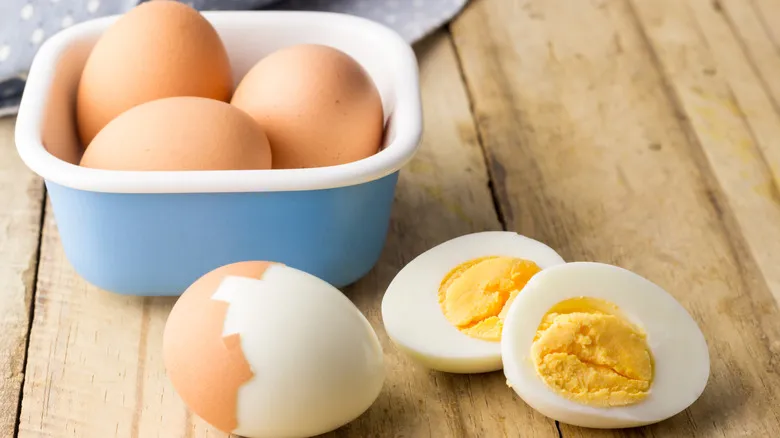
In comparison to many perishable items, raw eggs can be safely consumed for an extended period—typically three to five weeks when stored in the refrigerator. During this timeframe, they can surpass their expiration date without any negative consequences, according to the USDA. However, it's important not to assume that hard-boiled eggs have the same longevity simply because their shells remain intact. Once an egg has been hard-boiled, it should be eaten within one week if kept unpeeled in the fridge at 40 degrees Fahrenheit or lower. A peeled hard-boiled egg, on the other hand, is only safe to eat for two days when refrigerated.
A key food safety concern with hard-boiled eggs is their ability to temporarily raise the temperature of other foods in the refrigerator to unsafe levels. To mitigate this risk, quickly cool hard-boiled eggs in their shells by placing them in an ice bath for 20 to 40 minutes. After cooling, transfer them to the fridge, but avoid placing them in the door's egg holders, as they are often exposed to room temperature. Instead, opt for an airtight container or a well-sealed bag. Store it in the back of the fridge or in one of the drawers for optimal safety.
11. Fresh herbs
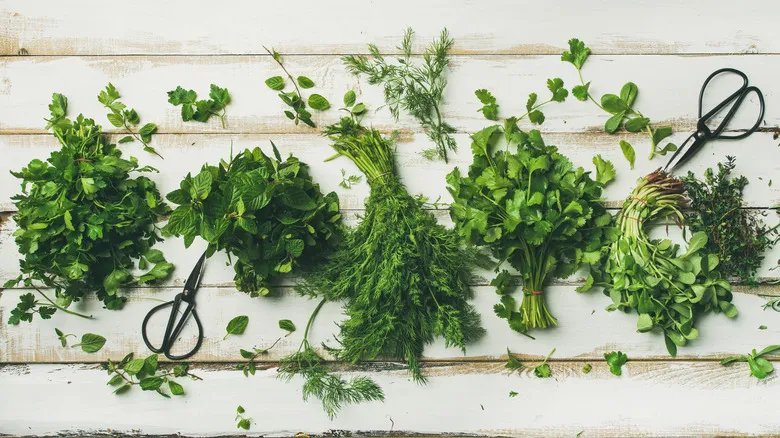
Fresh herbs have a unique ability to enhance the flavor of any dish they accompany. For example, fresh dill can transform plain rice into a flavorful side, while mint brings a delightful depth and aroma to meatballs. If you've ever purchased a bunch of fresh herbs only to see them wilt and lose their potency within a day or two, you're not alone. Unfortunately, herbs can't be stored loosely like salad greens; they require a bit more care, and the method you choose will depend on the type of herbs you have.
For delicate herbs such as dill, mint, or parsley, try the bouquet method to keep them fresh for a longer period. Begin by removing them from their twist-tied bundle, then rinse them under running water and dry them thoroughly. Trim about half an inch from the bottom of the stems and arrange them in small bunches in a container filled with water, similar to how you would prepare a flower bouquet. Just one to two inches of water is sufficient; be careful not to submerge the leaves. Finally, cover the leaves with a clear plastic bag and place the entire setup in the fridge, where they can stay fresh for weeks.
For sturdier herbs like rosemary, thyme, or oregano, the best way to store them is to wrap them loosely in a damp paper towel. After that, place them in an airtight container or a zip-top bag before refrigerating.
12. Bread

If you're considering venturing into baking your own bread, don't anticipate it remaining fresh and soft at room temperature for several days like store-bought bread. Commercial bread is made with preservatives and additives that help prolong its shelf life and maintain its softness. In contrast, homemade bread lacks these ingredients, which is why your freshly baked loaves may become stale by the next day. While you can always revive stale bread, knowing how to properly store your loaves can help you avoid this issue early on and also prevent mold growth.
Keeping homemade bread fresh requires a careful balance of air exposure. Leaving bread out in the open will cause it to stale, while insufficient airflow and excess moisture can lead to mold. The ideal storage solution for your bread is a bread box—store it unsliced. If you don’t have one, wrapping the loaf in paper or a clean dish towel is a good alternative.
Using plastic bags for bread storage is generally discouraged, as they can make the crust too soft and mushy. However, this isn't a strict rule. In very dry climates, for instance, a low-moisture bread might benefit from being kept in a sealed plastic zip-top bag to prevent it from drying out completely.
Recommended

The Reason Your Glassware Is Cloudy (And How To Fix It)

Effortlessly Clean Old Oven Grime With One Fresh Ingredient
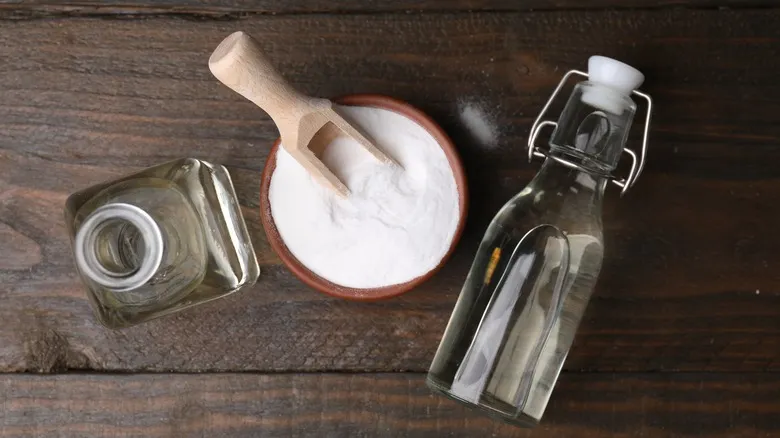
Why You Should Avoid Mixing Baking Soda And Vinegar When Cleaning

Baking Soda Is The Key To Cleaning Your Coffee Maker
Next up

